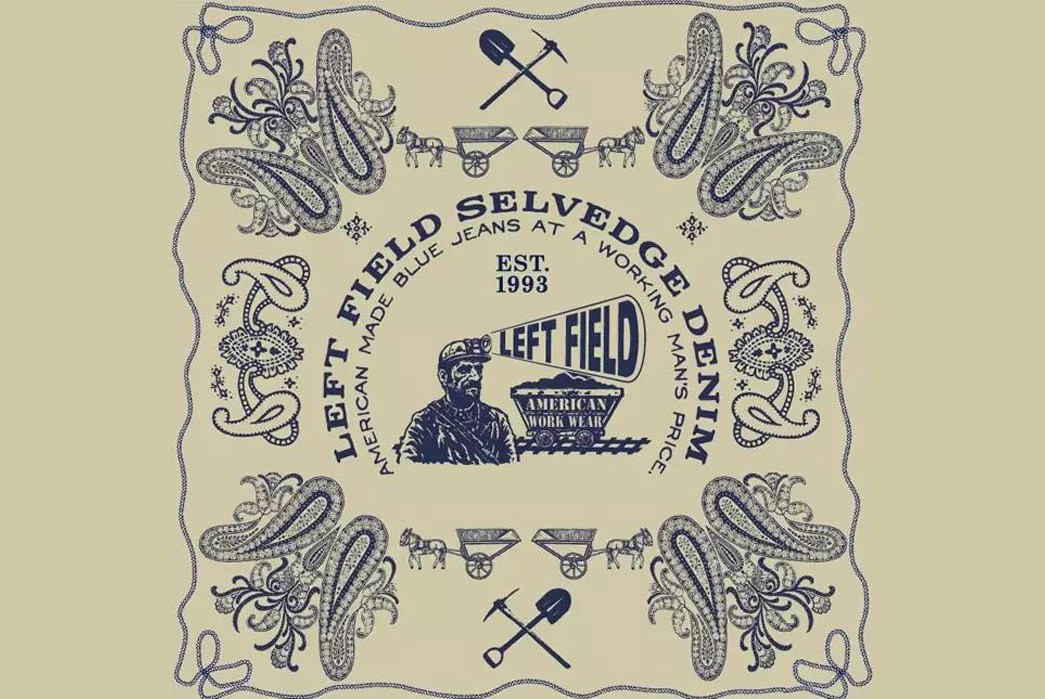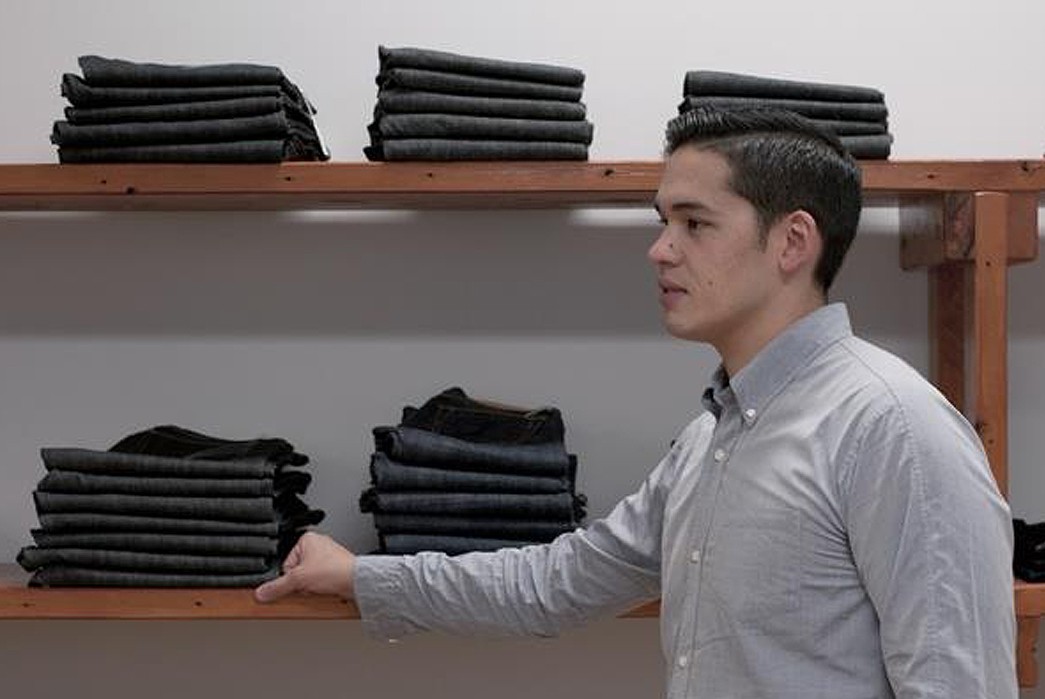- Heddels
- Posts
- June 24 - A Conversation with orSlow’s Ichiro Nakatsu
June 24 - A Conversation with orSlow’s Ichiro Nakatsu
A Conversation with orSlow’s Ichiro Nakatsu
We caught up with orSlow's founder and head desginer, Ichiro Nakatsu, to talk about denim, orSlow's 'dad' series jeans, and more.
James Smith

orSlow has become one of the most important labels within the realm of quality clothing. Its denim line is accessible while still honoring the history and tradition of raw and selvedge denim, and its apparel is concise and rugged without being too abstruse.
The mastermind behind orSlow is founder and head designer, Ichiro Nakatsu. We caught up with Ichiro for a quick chat about orSlow, wide-goods, labor shortages in Japan, and more.
James (Heddels): For those that aren’t familiar with yourself or orSlow, could you briefly introduce yourself and how you got into the world of denim and heritage goods?
Ichiro Nakatsu (orSlow): I am the founder and designer of orSlow. My love for denim started when I was very young—my first pair of denim overalls made me realize how beautifully denim ages over time. I was especially drawn to how older denim develops character through wear, which eventually led me into the world of vintage clothing.
H: Interesting! Do you remember what brand made those overalls? Were they already worn-in/aged?
IN: They were a pair of overalls from Big John, a Japanese brand, probably produced in the 1970s. At that time, the concept of pre-washed jeans did not really exist; garments were usually just one-washed to prevent shrinkage. I aged these overalls myself, starting from their one-wash state. I’ve heard that during the 1960s and 70s, Big John imported denim fabric from Cone Mills in the U.S. and carried out the sewing in Japan.
Orslow 105 Standard Fit Selvedge Denim Jeans, available for $308 from Blue in Green.
H: orSlow has really grown in the last 10 years or so. How would you say your brand has changed from its beginnings?
IN: In the very beginning, I was sewing all the samples myself. As production volumes increased, my focus shifted more toward product planning and overseeing the company as a whole. I believe the quality of our products has also improved significantly since those early days.

H: When I think about orSlow, the first thing that comes to my mind is Fatigue Pants. Your U.S. Army Fatigue Pants are a popular item, but your sateen is much slubbier and higher quality than the original OG107 pants. Can you share any insight on when you decide to improve upon a vintage garment, and when you choose to stay faithful to the original?
IN: The vintage items we reference are often from 60 to 70 years ago, and they were worn under very different circumstances. We try to preserve the essence and charm of the originals, but make slight adjustments so they suit today’s lifestyles and can be worn comfortably by a wide range of people.
orSlow’s U.S. Army Fatigue Trousers (regular cut), available from Brooklyn Tailors for $255.
H: I see. So the slubbiness of orSlow’s sateen is to make it more down-to-earth and attractive to a wider audience, rather than the more ‘official’ look of period-correct sateen?
IN: For orSlow’s reverse sateen, we emphasized irregularities in both the yarn and the dyeing to give the fabric a more distinctive character. Rather than intentionally trying to make the fabric more accessible or broadly appealing, I would say that was simply the natural result of the process.

H: While many labels in our space offer rigid, shrink-to-fit denim, orSlow focuses on ready-to-wear garments that are comfortable from the start. What made you choose this way of producing?
IN: Our original selvedge denim is woven in the same way as vintage denim and sewn in its raw, unprocessed state. Since raw denim shrinks significantly when washed, we pre-wash our garments to ensure a more accurate fit from the start. To eliminate any uncertainty in sizing, we account for shrinkage in advance through this process.
orSlow 107 ‘Ivy Fit’ Selvedge Denim Jeans, available for $308 from Blue in Green.
H: Your denim line is steadily growing, and I see a lot of love for the Dad and Super Dad series as wider silhouettes become popular again. What was your inspiration for producing these models?
IN: The Dad and Super Dad fits were inspired by 1990s fashion. That era was part of my own real-time experience, and from today’s perspective in 2025, it already feels like vintage. That sense of nostalgia and authenticity inspired these wide silhouettes.
H: This is such a good point, we’re technically living in a time where 90s and even early 2000s gear could be seen as ‘vintage’. Are there any other trends from those eras that inspire you?
IN: The 105 (non-selvedge), which was inspired by the non-selvedge 501 jeans often worn by musicians in the 1990s, also reflects influences from that period. Carhartt items also come to mind as trends that are reminiscent of that era.
H: The Super Dad model, specifically, uses wide goods instead of selvedge denim. Can you share more about this design decision?
IN: The Dad series was based on jeans from the 1990s—a time when shuttle looms were largely replaced by modern looms, and selvedge was no longer common. So the use of wide goods was a deliberate choice to stay true to that era.
A rare selvedge edition of the orSlow 100 Super Dad cut, which is typically made from Japanese wide goods. Available for $295 exclusively from Blue in Green.
H: A lot is said about labor shortages in Japan. Is this something that your brand has struggled with?
IN: Yes, it’s a real concern. We face shortages of skilled workers, from the craftsmen who weave our fabrics to the sewing machine operators in the factories. Many Japanese factories now rely on overseas workers to keep going. On top of that, the weak yen has made domestic manufacturing even more difficult.
Q: Concerning times, for sure. What do you think needs to happen in order to improve the situation? We, of course, want brands like orSlow to be able to produce quality clothing in Japan for as long as possible.
IN: I think it’s important to get younger people more interested in analog craftsmanship and to create better working environments that make it easier for them to join and stay in the industry.
H: Okay, time for a quick fire round. Favorite model of Levi’s 501?
IN: Definitely the 1950s 501s, especially those from the leather patch era. I really love the fabric from that period.
H: Any personal vintage grails that you have not managed to obtain?
IN: The earliest version of Levi’s 501 with a single back pocket—what’s known as the “One Pocket” model.
H: Favorite location in Japan and why?
IN: I feel most relaxed at my second home in Nishinomiya. It’s surrounded by the things I love, has a great view, and helps me reset. It’s also close to my office, so I can go there anytime.
H: Favorite location in the USA and why?
IN: Hawaii is my favorite. The energy of the land, the air, the ocean—being there always makes me feel refreshed and spiritually renewed.
Like this? Read these:
What did you think of today's newsletter? |





